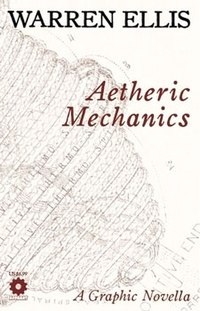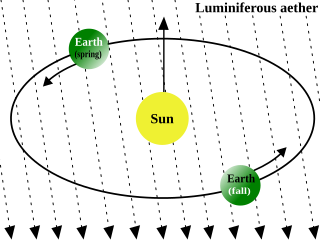
Luminiferous aether or ether was the postulated medium for the propagation of light. It was invoked to explain the ability of the apparently wave-based light to propagate through empty space, something that waves should not be able to do. The assumption of a spatial plenum of luminiferous aether, rather than a spatial vacuum, provided the theoretical medium that was required by wave theories of light.

Ivor Novello was a Welsh actor, dramatist, singer and composer who became one of the most popular British entertainers of the first half of the 20th century.

Nothing, no-thing, or no thing, is the complete absence of anything as the opposite of something and an antithesis of everything. The concept of nothing has been a matter of philosophical debate since at least the 5th century BC. Early Greek philosophers argued that it was impossible for nothing to exist. The atomists allowed nothing but only in the spaces between the invisibly small atoms. For them, all space was filled with atoms. Aristotle took the view that there exists matter and there exists space, a receptacle into which matter objects can be placed. This became the paradigm for classical scientists of the modern age like Newton. Nevertheless, some philosophers, like Descartes, continued to argue against the existence of empty space until the scientific discovery of a physical vacuum.

The Prisoner of Zenda is an 1894 adventure novel by Anthony Hope, in which the King of Ruritania is drugged on the eve of his coronation and thus is unable to attend the ceremony. Political forces within the realm are such that, in order for the king to retain the crown, his coronation must proceed. Fortuitously, an English gentleman on holiday in Ruritania who resembles the monarch is persuaded to act as his political decoy in an effort to save the unstable political situation of the interregnum.
Ruritania is a fictional country, originally located in Central Europe as a setting for novels by Anthony Hope, such as The Prisoner of Zenda (1894). Nowadays, the term connotes a quaint minor European country or is used as a placeholder name for an unspecified country in academic discussions. The first known use of the demonym Ruritanian was in 1896.
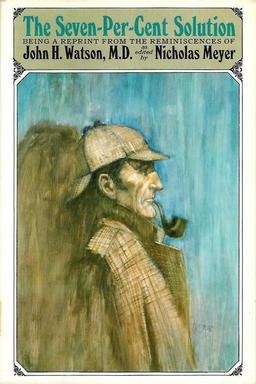
The Seven-Per-Cent Solution: Being a Reprint from the Reminiscences of John H. Watson, M.D. is a 1974 novel by American writer Nicholas Meyer. It is written as a pastiche of a Sherlock Holmes adventure, and was made into a film of the same name in 1976.
Action at a distance is the concept in physics that an object's motion can be affected by another object without the two being in physical contact; that is, it is the concept of the non-local interaction of objects that are separated in space. Coulomb's law and Newton's law of universal gravitation are based on action at a distance.
The history of special relativity consists of many theoretical results and empirical findings obtained by Albert A. Michelson, Hendrik Lorentz, Henri Poincaré and others. It culminated in the theory of special relativity proposed by Albert Einstein and subsequent work of Max Planck, Hermann Minkowski and others.
The deductive-nomological model of scientific explanation, also known as Hempel's model, the Hempel–Oppenheim model, the Popper–Hempel model, or the covering law model, is a formal view of scientifically answering questions asking, "Why...?". The DN model poses scientific explanation as a deductive structure, one where truth of its premises entails truth of its conclusion, hinged on accurate prediction or postdiction of the phenomenon to be explained.
According to ancient and medieval science, aether, also known as the fifth element or quintessence, is the material that fills the region of the universe beyond the terrestrial sphere. The concept of aether was used in several theories to explain several natural phenomena, such as the propagation of light and gravity. In the late 19th century, physicists postulated that aether permeated space, providing a medium through which light could travel in a vacuum, but evidence for the presence of such a medium was not found in the Michelson–Morley experiment, and this result has been interpreted to mean that no luminiferous aether exists.
In the history of physics, aether theories proposed the existence of a medium, a space-filling substance or field as a transmission medium for the propagation of electromagnetic or gravitational forces. Since the development of special relativity, theories using a substantial aether fell out of use in modern physics, and are now replaced by more abstract models.
What is now often called Lorentz ether theory (LET) has its roots in Hendrik Lorentz's "theory of electrons", which marked the end of the development of the classical aether theories at the end of the 19th and at the beginning of the 20th century.

The Burney Relief is a Mesopotamian terracotta plaque in high relief of the Isin-Larsa period or Old-Babylonian period, depicting a winged, nude, goddess-like figure with bird's talons, flanked by owls, and perched upon two lions.
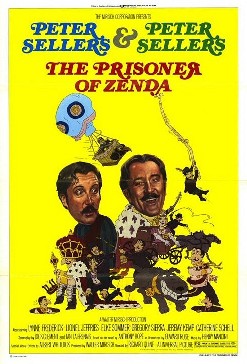
The Prisoner of Zenda is a 1979 American comedy film directed by Richard Quine that stars Peter Sellers, Lynne Frederick, Lionel Jeffries, Elke Sommer, Gregory Sierra, Jeremy Kemp, and Catherine Schell. It is adapted from the 1894 adventure novel by Anthony Hope. The novel tells the story of a man who has to impersonate a king, whom he closely resembles, when the king is abducted by enemies on the eve of his coronation.
"Apparat Singles Group", a.k.a. "Apparat", is a fictional comic book line and a label used to publish four one-shot comic books created by Warren Ellis and published by Avatar Press.

The Bank Job is a 2008 heist thriller film directed by Roger Donaldson and written by Dick Clement and Ian La Frenais. It is based on the 1971 burglary of Lloyds Bank safety deposit boxes in Baker Street. It stars Jason Statham.

Dumuzid or Dumuzi or Tammuz, known to the Sumerians as Dumuzid the Shepherd and to the Canaanites as Adon, is an ancient Mesopotamian and Levantine deity associated with agriculture and shepherds, who was also the first and primary consort of the goddess Inanna. In Sumerian mythology, Dumuzid's sister was Geshtinanna, the goddess of agriculture, fertility, and dream interpretation. In the Sumerian King List, Dumuzid is listed as an antediluvian king of the city of Bad-tibira and also an early king of the city of Uruk.
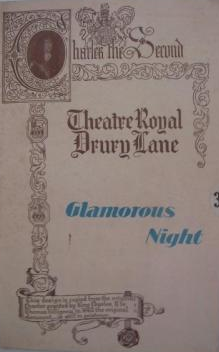
Glamorous Night is a musical with a book and music by Ivor Novello and lyrics by Christopher Hassall, Novello's collaborator in six of the eight Novello musicals staged between 1935 and 1951. Glamorous Night was the first of several hit Novello musicals in the 1930s given expensive, spectacular productions.
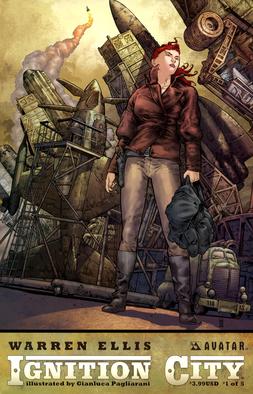
Ignition City is a five-issue science fiction comic book limited series, written by Warren Ellis and illustrated by Gianluca Pagliarani. It was published in 2009 by American company Avatar Press.

James Bond is a line of spy thriller comic book titles by Dynamite Entertainment featuring the eponymous character originally created by Ian Fleming. It is licensed by Ian Fleming Publications and debuted in November 2015. Additional series and graphic novels are planned.
